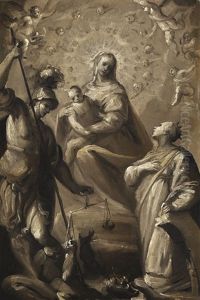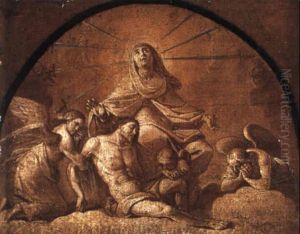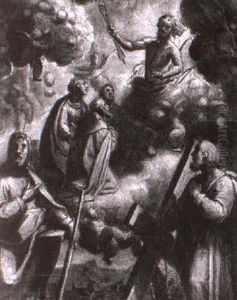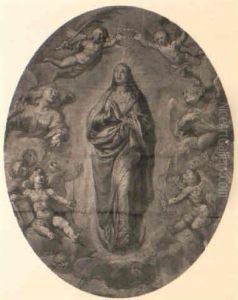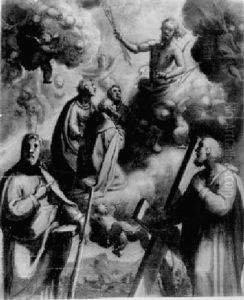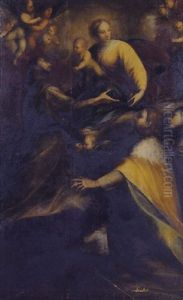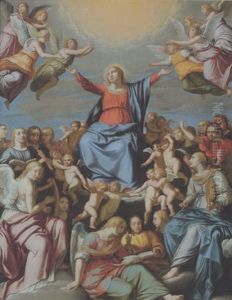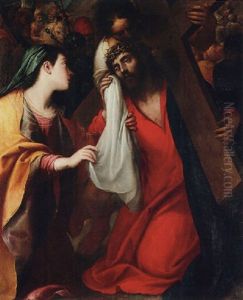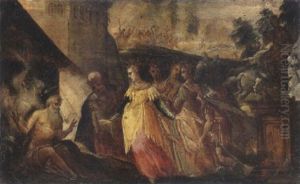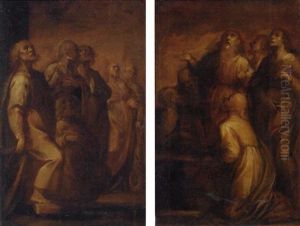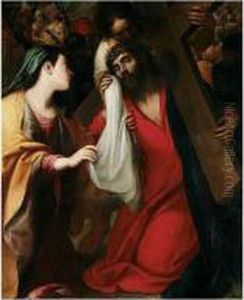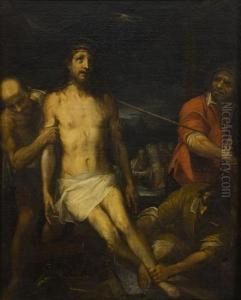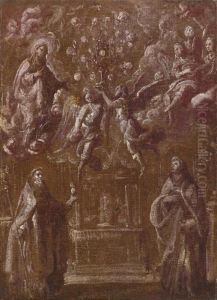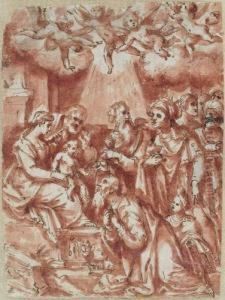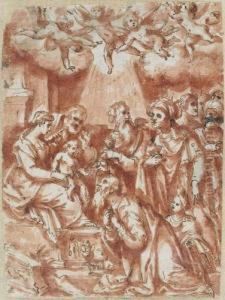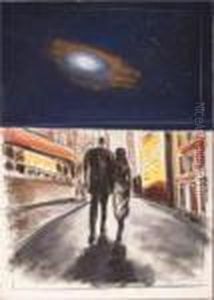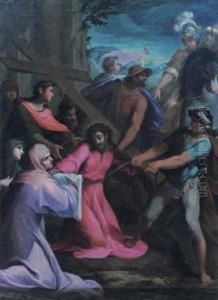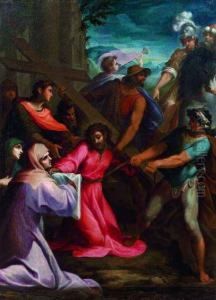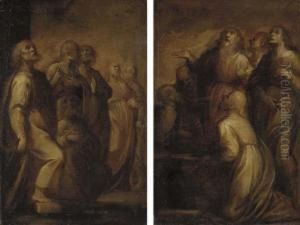Pietro Sorri Paintings
Pietro Sorri, also known as Pietro Sorri or Sordo, was an Italian painter of the late Renaissance period, active mainly in Siena, but also in Rome and other parts of Italy. Born in 1556 in Siena, Sorri was a notable figure within the Sienese school of painting, which maintained a stylistic distinction from the Florentine school, favoring more conservative and Gothic elements well into the 16th century.
Sorri's early training remains somewhat obscure, but it is believed that he was a pupil of Arcangelo Salimbeni, another Sienese painter who had a significant influence on his artistic development. Sorri's work was also influenced by the Mannerist style, which was prevalent in Italy during the 16th century. This style was characterized by artificiality, grace, and elegance, departing from the more naturalistic approaches of the High Renaissance.
Throughout his career, Pietro Sorri painted a number of altarpieces and frescoes. He was known for his religious works, which often featured vivid colors and a skillful use of light and shade, creating dramatic effects that enhanced the spiritual and emotional intensity of his subjects. Among his notable works are the frescoes in the Palazzo Pubblico in Siena and the 'Birth of the Virgin' in the church of San Francesco in Siena.
Sorri was also active in Rome, where he absorbed further influences, particularly from the work of the great Renaissance masters like Michelangelo and Raphael. However, he remained committed to the traditions of the Sienese school, and his work continued to reflect its principles even as he incorporated elements from other Italian artistic centers.
Pietro Sorri passed away in 1622 in Siena. His legacy is evident in the works of later Sienese painters who carried forward the distinct characteristics of their regional style into the 17th century. Sorri's paintings are held in various Italian churches and museums, and they continue to be studied for their contribution to the Sienese school and the broader context of Italian Renaissance art.
